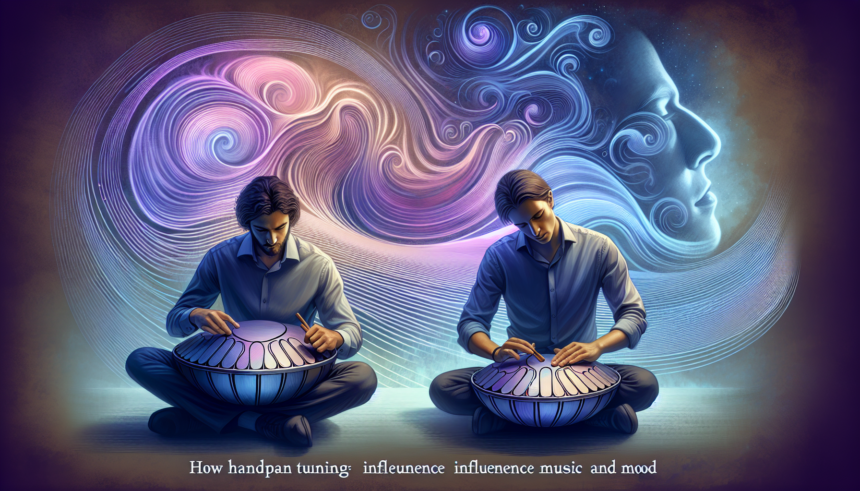The handpan, sometimes referred to as the “hang drum,” has gained immense popularity over recent years as an ethereal and profoundly emotional musical instrument. It delivers a unique sonic experience that can transport listeners into various emotional states, from deep relaxation to intense inspiration. One lesser-known aspect of the handpan is how the instrument’s tuning significantly influences both the music it produces and the emotional responses it evokes. This article delves into the intricacies of handpan tunings and their impact on music and mood.
Understanding Handpan Tunings
Handpan tunings are the sets of pitches that each handpan is crafted to produce. Unlike many traditional instruments where you can change the tuning easily, a handpan’s tuning is fixed at the time of manufacture. This makes the choice of tuning a crucial aspect for both players and listeners. Handpans typically have a central note called the “ding” and several other notes called “tone fields” arranged around it.
Scales and Modes
One of the most integral aspects of handpan tuning is the selection of scales or modes. These refer to the specific sets of notes that define the instrument’s musical possibilities. Some commonly used scales in handpans include:
- Major Scale: Known for its happy and uplifting sound, the major scale is often used in genres like folk and classical music.
- Minor Scale: This scale has a more melancholic and introspective feel, often used in genres like blues and contemporary music.
- Pentatonic Scale: Featuring five notes per octave, this scale sounds harmonious and is simple to play, making it popular among beginners.
- Ethnic Scales: Handpans can also be tuned to non-Western scales like the Hijaz or the Akebono, which evoke a distinct cultural ambiance.
The Physics of Sound and Mood
The impact of handpan tunings on mood is rooted in the physics of sound itself. Different frequencies and harmonics affect the human brain in various ways. Lower frequencies can induce a state of calm and relaxation, while higher frequencies may result in heightened alertness or even anxiety. When you consider that every handpan tuning consists of a range of frequencies, it becomes clear that the tuning directly affects the emotional landscape the handpan can create.
Resonance and Harmonics
Resonance is another critical factor. When a note is struck on a handpan, it produces a complex series of harmonics or overtones. These overtones contribute to the richness and texture of the sound, creating an immersive auditory experience. The specific arrangement and proportion of these overtones can significantly influence our emotional state. For example, well-balanced overtones can make the sound more soothing, while dissonant overtones might create tension or unease.
Emotional States and Handpan Tunings
Considering the above elements, different handpan tunings can evoke various emotional states. Here are some examples:
Calm and Relaxation
Handpans tuned to lower frequencies or certain pentatonic scales are particularly effective at inducing a state of calm and relaxation. These tunings resonate well with the body’s natural frequencies, helping to slow down the heart rate and reduce stress. Music therapists often use such tunings to help patients achieve a state of mental and emotional well-being.
Joy and Upliftment
Tunings based on major scales are ideal for creating an atmosphere of joy and upliftment. These tunings produce bright and melodious sounds that can elevate the spirit and inspire happiness. Musicians often use these tunings in communal gatherings or celebratory events to foster a sense of unity and joy among participants.
Introspection and Depth
Minor scales or ethnic scales like the Hijaz are effective in evoking feelings of introspection and emotional depth. These tunings often produce a more somber or mystical sound, prompting listeners to delve deeper into their thoughts and emotions. These tunings are frequently used in solo performances or intimate settings where a more reflective atmosphere is desired.
Choosing the Right Tuning
Given the wide range of emotional experiences that different tunings can evoke, choosing the right handpan tuning is an important decision for any musician or listener. Here are some factors to consider:
Personal Preference
Your personal taste in music and emotional needs should be at the forefront of your decision. Spend some time listening to different tunings to see which ones resonate with you the most.
Intended Use
Consider the context in which you plan to use the handpan. Is it for personal meditation, public performances, or music therapy? Each context may benefit from different tunings to achieve the desired emotional impact.
Versatility
Some tunings are more versatile than others, making them suitable for a wider range of musical styles and emotional expressions. If you’re an experienced musician, you might appreciate the flexibility that certain tunings offer.
Conclusion
The tuning of a handpan significantly influences both the music it produces and the emotional responses it elicits. From calm and relaxation to joy and introspection, the choice of tuning can shape the entire auditory and emotional experience. By understanding the different tunings and their impacts, musicians and listeners alike can make more informed choices that enhance their musical journey and emotional well-being.
FAQs
1. Can I change the tuning of my handpan?
No, the tuning of a handpan is fixed during its manufacture and cannot be easily changed. If you wish to explore different tunings, you’ll need to acquire additional handpans.
2. Which handpan tuning is best for beginners?
The pentatonic scale is often recommended for beginners due to its harmonious sounds and ease of play. It’s forgiving and allows for a wide range of musical expression without involving complex techniques.
3. How do I choose the right tuning for my handpan?
Consider your personal preferences, the intended use of the handpan, and the emotional states you wish to evoke. Listening to various tunings and seeking advice from experienced players can also be helpful.
4. Are certain tunings better for music therapy?
Yes, tunings that produce calming and relaxing sounds, such as certain pentatonic scales or low-frequency notes, are often used in music therapy to help patients achieve mental and emotional well-being.
5. Can I create my own handpan tuning?
While it’s technically possible to design your own tuning, it’s generally not recommended for beginners. Custom tunings require a deep understanding of musical scales and the physics of sound. Working with an experienced handpan maker is advisable if you wish to explore custom tunings.





